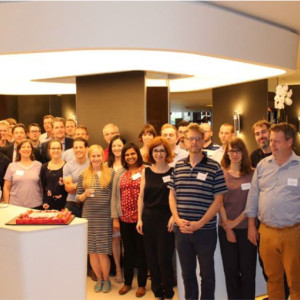 \
&
Contact us
\
&
Contact us
 \
&
Contact us
\
&
Contact us
Partnership website: https://www.eiturbanmobility.eu/
EIT Urban Mobility is an innovation community focused on transforming urban mobility systems to make them more sustainable, efficient, and people-centric. It brings together a wide range of stakeholders, including businesses, cities, universities, research centers, and other organizations, to collaborate and drive innovation in urban mobility.
There are various possibilities within the EIT Urban Mobility:
The EIT publishes regularly calls for proposals for these different programmes. You can find out the opportunities and latest news at the EIT Urban Mobility webpage.
The headquarter of this innovation community is in Barcelona but there is a regional hub in Helmond which serves as a point of contact for interested parties from Flanders (west@eiturbanmobility.eu).
You can also attend or watch InnovEIT, the annual conference of the EIT where you can meet other members of the communities and EIT experts.
Lastly, for mobility-related inquiries you can contact the National Contact Point (NCP) for cluster 5.
Partnerships group the EC and private and/or public partners, to coordinate and streamline the research & innovation initiatives and funding in some selected key domains.

Circusol is an Innovation Action project funded under a cross-cutting work programme part of Horizon 2020. Circusol aims at unleashing the full potential of circular business models, in particular Product-Service Systems, in simultaneously delivering real environmental, economic and user benefits. By that, Circusol aims to establish solar power as a spearhead sector in demonstrating a path driven by service-based businesses towards a circular economy in Europe.
A strong Flemish partnership in new Horizon 2020 project on circular economy business demonstrators, including VITO (Coordinator), IMEC, Ecopower cvba, Futech bvba, PV Cycle aisbl and Daidalos Peutz bvba.